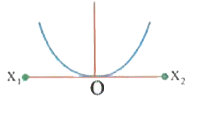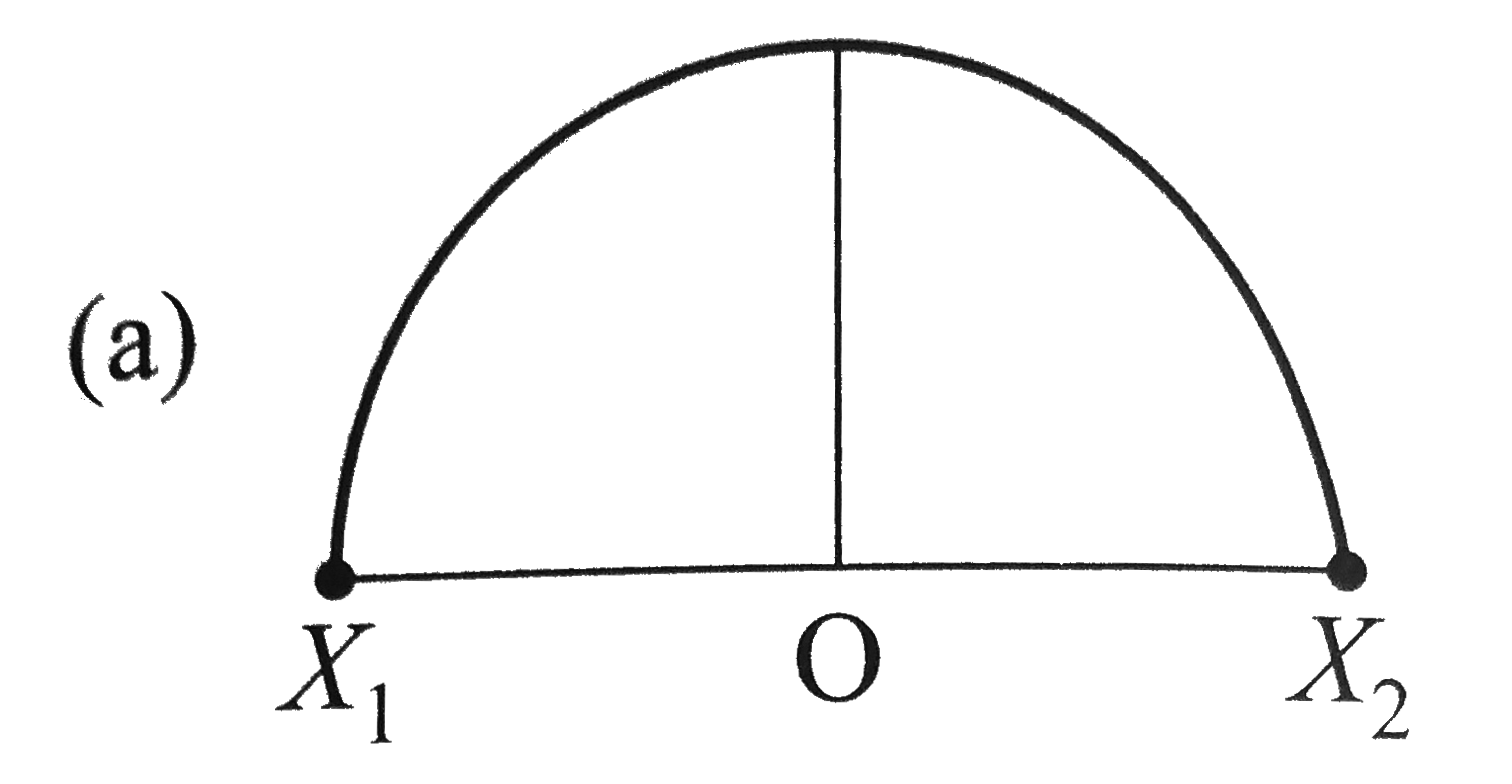A particle of mass m oscillates with simple harmonic motion between points x1 and x2, the equilibrium position being O. Its potential energy is plotted. It will be as given below in the graph




The correct Answer is:D
Potential energy of particle performing SHM is given by PE=12mω2y2 i.e., it varies parabolically such that at mean position it becomes zero and maximum at extreme positions.
Topper's Solved these Questions
- OSCILLATIONSBOOK - NARAYNACHAPTER - OSCILLATIONSEXERCISE - EXERCISE - II (H.W)
19 Videos
- OSCILLATIONSBOOK - NARAYNACHAPTER - OSCILLATIONSEXERCISE - EXERCISE - III
29 Videos
- OSCILLATIONSBOOK - NARAYNACHAPTER - OSCILLATIONSEXERCISE - EXERCISE - I (H.W)
66 Videos
- NEWTONS LAWS OF MOTIONBOOK - NARAYNACHAPTER - NEWTONS LAWS OF MOTIONEXERCISE - PASSAGE TYPE QUESTION
6 Videos
- PHYSICAL WORLDBOOK - NARAYNACHAPTER - PHYSICAL WORLDEXERCISE - C.U.Q
10 Videos
Similar Questions
The potential energy of a particle, executing a simple harmonic motion, at a dis"tan"ce x from the equilibrium position is proportional to
View SolutionA particle executes simple harmonic motion of ampliltude A. At what distance from the mean position is its kinetic energy equal to its potential energy?
View Solution
Knowledge Check
A particle of mass m oscillates with simple harmonic motion between points x1 and x2 the equilibrium position being O its potential energy in plotted it will be as given bellow in the graph
A B
B C
C D
D
A particle of mass m oscillates with simple harmonic motion between two points x1 and x2 the equilibrium position being O its potential energy is plotted on the graph which of the following curve represents the phenomenon?
A B
B C
C D
D
A particle of mass m oscillates with simple harmonic motion between two points x1 and x2 the equilibrium position being O its potential energy is plotted on the graph which of the following curve represents the phenomenon?
A B
B C
C D
D
A particle oscillates simple harmonic motion with a period of 16s. Two second after crossing the equilibrium position its velocity becomes 1m/s. The amplitude is
View SolutionA particle is executing simple harmonic motion between exterme positions given by (−1,−2,−3)cm and (1,2,1)cm. Its amplitude of oscillation is
View SolutionA particle is vibrating in a simple harmonic motion with an amplitude of 4 cm . At what displacement from the equilibrium position, is its energy half potential and half kinetic
View SolutionA particle starts oscillating simple harmonically from its equilibrium position then, the ration of kinetic energy and potential energy of the particle at the time T/12 is: (T=time period)
View SolutionA body is executing a simple harmonic motion such that its potential energy is U1at U2aty When the displacement is x+y the potential energy will be
View Solution
